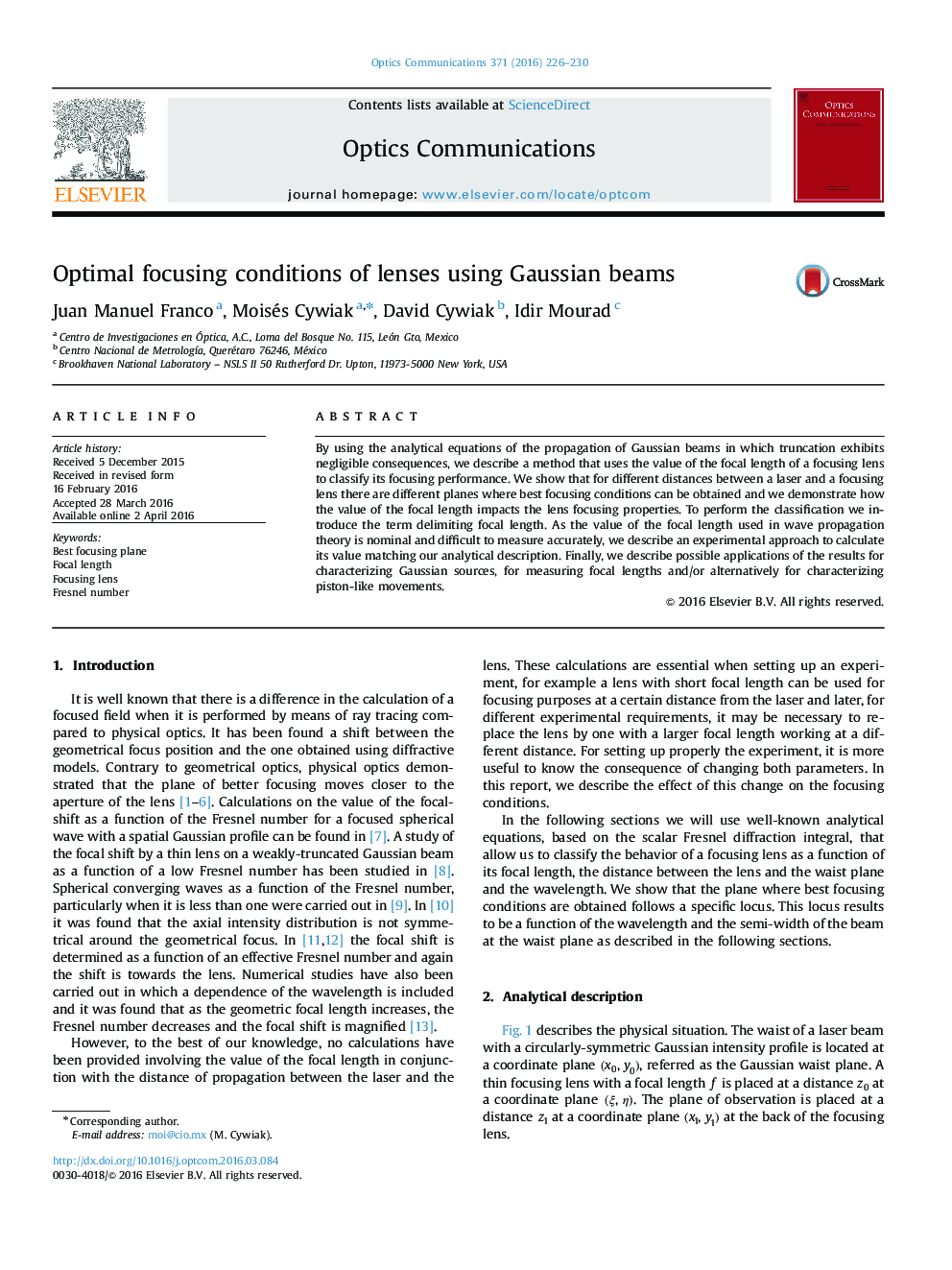| Article ID | Journal | Published Year | Pages | File Type |
|---|---|---|---|---|
| 7927991 | Optics Communications | 2016 | 5 Pages |
Abstract
By using the analytical equations of the propagation of Gaussian beams in which truncation exhibits negligible consequences, we describe a method that uses the value of the focal length of a focusing lens to classify its focusing performance. We show that for different distances between a laser and a focusing lens there are different planes where best focusing conditions can be obtained and we demonstrate how the value of the focal length impacts the lens focusing properties. To perform the classification we introduce the term delimiting focal length. As the value of the focal length used in wave propagation theory is nominal and difficult to measure accurately, we describe an experimental approach to calculate its value matching our analytical description. Finally, we describe possible applications of the results for characterizing Gaussian sources, for measuring focal lengths and/or alternatively for characterizing piston-like movements.
Keywords
Related Topics
Physical Sciences and Engineering
Materials Science
Electronic, Optical and Magnetic Materials
Authors
Juan Manuel Franco, Moisés Cywiak, David Cywiak, Idir Mourad,
